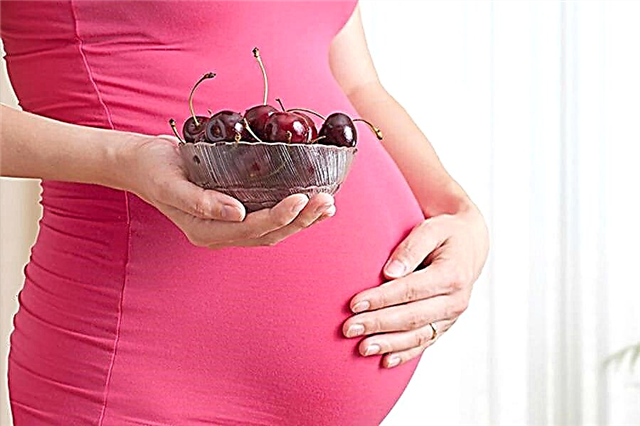The question of how to properly hold a pen when writing usually arises before parents when the child turns 5 or 6 years old. But experts are convinced that it is necessary to start learning much earlier so that the first grader does not have to retrain in an emergency mode.
A small child tries to take a pencil in the most convenient way for himself, most often in a fist. However, the situation is complicated by the fact that such a habit quickly takes root, so the type of holding the writing instruments persists for life.
Naturally, children's handwriting suffers, but this is not the most important problem. If the writing accessory is in the wrong position, the child's hand gets tired while working, the writing speed decreases, posture may suffer, and the curvature of the spine will worsen.
There are several simple techniques with which you can teach your child to hold a pen or pencil correctly. Moreover, it is necessary to start at a very early age, when the toddler first takes a rattle, spoon or crayon in his palms.
Why do errors occur?
The situation when a child incorrectly holds a pen, pencils, felt-tip pens during writing is quite common. Where does this problem come from? This habit is formed at a very early age, long before entering school.
 Everything can start from the period when the child becomes interested in the rattle, holding it in the handle. Then comes the turn of brushes, soft pencils, with which the baby depicts scribbles on album sheets.
Everything can start from the period when the child becomes interested in the rattle, holding it in the handle. Then comes the turn of brushes, soft pencils, with which the baby depicts scribbles on album sheets.
In addition, the skill of holding writing instruments is formed by working with plasticine or a special test.
Correct pinching and sculpting is done with the right hand, using the thumb, index and middle fingers.
From the age of 4, it is necessary to observe how the child draws. Some kids hold a pencil in their cam. Others squeeze the writing material with excessive force.
It is impossible to let the process of capture formation take its course. If the child holds the markers the way he wants, then at school he will have to be retrained. The sooner the correct grip is formed, the easier the first grader will be able to adapt to school.
At the age of 6, children should already be able to use a pencil, even if it is just drawing patterns in the copybooks or drawing block letters. Moreover, parents need to constantly monitor the correctness of the letter in order to prevent retraining.
What is the risk of improper holding of a pencil?
As already noted, incorrect grasping of the writing instrument can lead to health problems for the child. The most dangerous undesirable consequences are visual impairment, curvature of the spinal column due to improper sitting at the table.

Even if such unpleasant complications do not arise in the child, he will simply become more likely to get tired when writing, shading or drawing. And this can negatively affect school performance and psychological adaptation.
Such troubles can be prevented if the wrong hand position and incorrect grip of the writing accessory are detected in time. You can recognize a future school problem on the following grounds:
- the baby holds his thumb while working slightly below the index;
- the pencil holds the index or ring fingers, and not the middle;
- the felt-tip pen is taken with a pinch;
- the fingers are either too low or too high;
- the child, drawing a picture, rotates not a pencil, but the album sheet itself;
- the upper end of the pencil is directed not towards the shoulder, but towards the neck;
- the toddler presses on the paper either with excessive force or too lightly.
If you find one or more signs of mistakenly gripping the pencil, you need to immediately move on to correcting the habit. Otherwise, after entering school, the child may have problems with his studies.
How to hold a pen while writing?
The main nuance is the location of the fingers. A right-handed person takes a writing object as follows: the pen is placed on the upper part of the middle finger, and the index finger holds the writing accessory on top. The thumb is on the left.

For left-handed people, the grip is mirror-like: the handle is located on the upper part of the middle finger of the left hand, the index finger holds the object on top, and the large one - on the right side.
You can check for proper grip by lifting your index finger. Did the writing material stay in place and didn't even budge? This means that the child is holding the pen correctly.
There are no special requirements for the rest of the fingers. The nameless and little finger can be positioned in any way convenient for the little scribe. Usually they are pressed against the palm.
In order for the child to finally understand how to hold a pencil correctly when writing and drawing, experts recommend reminding the baby about the following rules:
- the writing object is placed exactly on the pillow of the terminal section of the middle finger;
- all three fingers, which are involved in holding the object, seem to be rounded;
- two other fingers bend and press against the palm;
- the whole hand is completely relaxed;
- ideal position - fingers are located above one and a half centimeters from the tip of a pen or pencil;
- in the process of writing letters or drawing, the little finger may touch the table surface.
Regular repetition of these rules will allow you to put the correct capture of writing materials already at an older preschool age, which will allow you not to waste time and nerves on retraining.
6 ways to teach your child to hold a pen correctly
Not all parents know which technique is most effective in teaching their kids the optimal grip on writing accessories. Experts identify several simple methods that are versatile (suitable for all children) and effectiveness (they work in almost 100% of cases).
Parents just have to choose the most suitable methodology and start the teaching process.
Capture with tweezers
To teach your child to correctly grasp the writing object in his hand, it is necessary to use the tweezers "grip". This is one of the simplest and most intuitive techniques for holding pencils.
A smooth object is placed with the slate end down perpendicular to the table top. The child grabs the upper part with three working fingers, and then moves them downward until they take the optimal position, which is required when writing.
Napkin method
In order for children's fingers to be able to take the correct position, it is necessary to stock up on half of a napkin and a pencil in advance. The paper accessory needs to be folded 4 times, after which the baby presses it to the palm with his little finger and ring finger.

The child straightens the fingers working when writing and takes a pencil with them as described above. "Extra" fingers will no longer prevent the kid from correctly grabbing the writing object.
Darts
A child of 5 or 6 years old can be offered to throw darts in order to gain a correctly set grip. It turns out that darts is not just an exciting game, but also a kind of simulator that helps to understand the principle of holding a writing instrument.
The three-finger method of holding a dart is similar to that of a pencil or pen. Therefore, whenever a child sits down at a prescription or a notebook, remind them that a written object must be taken as a playing accessory.
Crayons
 Artistic crayons are another good option for learning how to hold a pencil properly.
Artistic crayons are another good option for learning how to hold a pencil properly.
Previously, the pastel must be broken into pieces, the length of which does not exceed three centimeters.
Children cannot hide such small crayons in a fist, so they will have to hold the pastel with only three fingers.
Having worked with chalk, the child will be able to switch to older writing accessories without any problems.
Finger mark
If the kid still does not understand how to properly hold a regular pen, you should use the simplest technique, which involves drawing a point on the place of the middle finger where the pencil should lie.
A similar mark (or a plus, a line) must be placed on the writing instrument, stepping back one and a half centimeters from the point of the lead. It is explained to the child that the two points must match to obtain a perfect grip.
Bayu-bye, pen
An interesting play method will help a very young child to correctly hold a pencil or pen, while it does not matter at all whether the baby prefers the right or left grip.

The little one is told that the pencil is tired and wants to sleep, he needs to be helped to go to the "bed". A “pillow” is placed under his head, and a “blanket” is covered on top.
Explaining: "bed" - middle finger, "pillow" - index finger, "blanket" - big. You can even write a fairy tale about a pencil and fingers.
Pencil attachment as a teaching technique
Writing accessory manufacturers are also concerned about the problem of teaching writing. In the stationery departments, parents can purchase special attachments, which are made in the form of animals.
 These devices have special small notches and recesses. If the rubber attachment is put on the pen, then the child simply will not be able to grab the writing accessory incorrectly.
These devices have special small notches and recesses. If the rubber attachment is put on the pen, then the child simply will not be able to grab the writing accessory incorrectly.
On the net you can find many positive reviews about an accessory such as a training handle for learning the correct grip. The accessory looks like a fish with special grooves. Manufacturers and parents claim that such a simulator can even correct a child's handwriting.
Another option for educational writing devices is the pens from the Stabilo LеftRight series. These devices have been developed with the input of medical professionals, teachers and ergonomics specialists. On the triangular handles there are already special nozzles with recesses, which help the "scribe" to take the object correctly.
In addition, writing utensils are made of light soft material, and their coloring gives children a good mood, which is also important when deciding how to teach a child to hold a pencil correctly.
How to choose the perfect pen?
At an early age, it is best to start familiarizing yourself with writing objects with a pencil, since it is easier to grasp and hold in the correct position. Then you should go to the handle.
In order for the child to like the future school supplies and meet all the requirements, it is necessary to take into account several important characteristics:
- the presence of a rubber insert that will eliminate slippage;
- safety of the material, since the child will definitely pull the pen into his mouth;
- triangular body shape;
- the length of the product is less than 13 centimeters, and the thickness does not exceed 8 millimeters.
The best pen for drawing letters in a recipe is a ballpoint pen. Dark blue or violet inks should be preferred as they leave a distinct mark. The blue rod writes less clearly, so the first grader will press on the pen.
Correct posture at the table
In order for the child to be able to hold the pen correctly while writing, he needs to take an optimal position at the table. For a long time, schoolchildren have been taught to observe the principle of three right angles.
 The ideal fit is when the right angle is formed by bent knees, hips and back, bent elbows.
The ideal fit is when the right angle is formed by bent knees, hips and back, bent elbows.
And you should also remind the child so he:
- kept his legs close;
- put his feet entirely on the floor;
- put his hands on the desk when writing;
- kept a 2-cm gap between the table top and the body;
- laid the prescription at a 30-degree angle to the body;
- bent his head slightly to the table.
Setting up a child's hand for writing is impossible without proper holding of the pen. To prevent the child from getting tired, it is necessary to observe a certain distance from the tip of the rod to the index finger - 1.5 centimeters.
Development of fine motor skills
For a child to be able to write correctly at 6 or 7 years old, it is necessary to improve his fine motor skills at an early and preschool age. Such exercises will help you develop beautiful handwriting and coordinate movements.
To prepare for the letter, you can do exercises such as:
- finger gymnastics;
- rolling beads between the fingers;
- stringing beads or large beads on a thread;
- cutting paper patterns with safety scissors;
- tying and untying knots;
- sewing on buttons;
- Painting;
- performing various shading;
- finishing of patterns;
- modeling from plastic mass;
- lacing;
- fun with the designer;
- fun with a bumpy ball, etc.
With the help of the above rules and recommendations, the parent will be able to develop fine motor skills of the fingers and easily teach the child the correct position of the fingers when carrying out written work.
Thus, the question of how to teach a child to hold a pencil or pen sooner or later arises before each parent. However, this problem is solved quite simply, but only if you are patient and take into account the characteristics of the baby.



